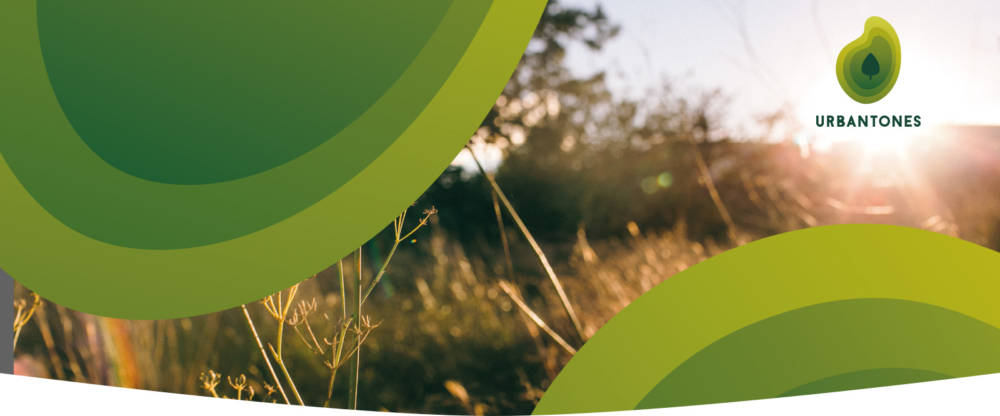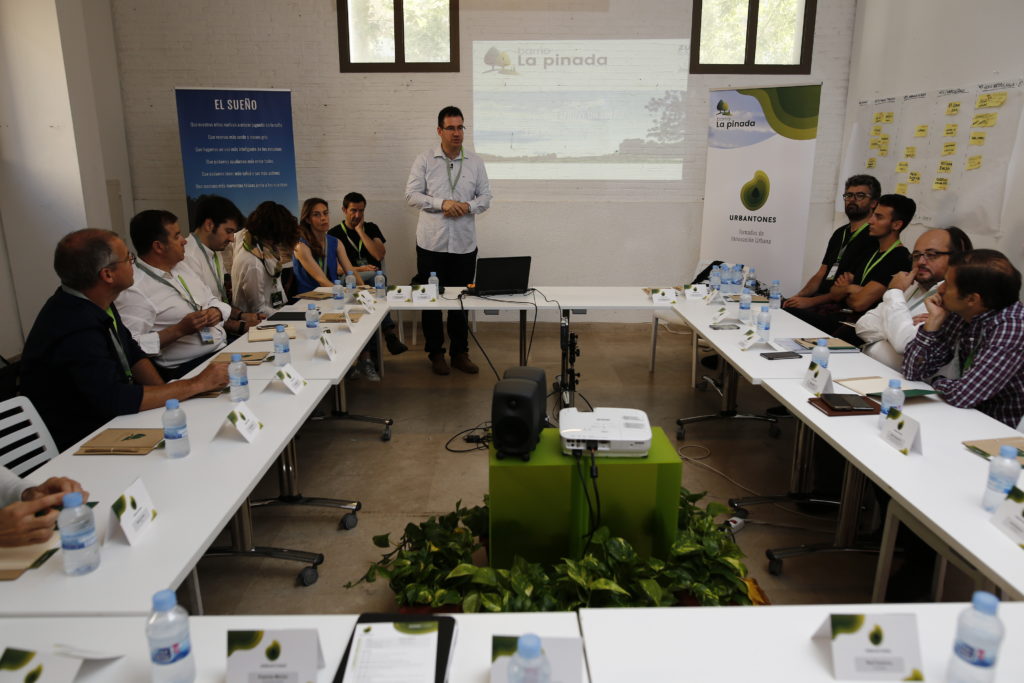Thanks to the work sessions carried out in urbantones, we managed to detect intertwined aspects of urban design that we must integrate into the La Pinada proposal. This is one of the expected vacant areas due to the current proposal of which its challenge is to resolve the present disconnections with neighbouring districts, to provide suitable links with Paterna and nearby towns, and link the metropolitan mobility at the same time. Our main objective is to create a totally pedestrianized district with innovative solutions in low-carbon mobility, which is also well connected on a local, municipal and metropolitan scale. These sustainable mobility solutions joined to pedestrian links could also solve problems regarding divided territory, and lack of cohesion which are so typical in the town of Paterna.
Table of Contents
TACKLING THE SUSTAINABLE MOBILITY CHALLENGE
In this way, La Pinada is not trying to be simply another developed area. Instead, La Pinada is rigorously and innovatively tackling the challenge that the construction of this district suppose, which must always be subject to a design criteria that minimises its impact and contributes to improving the conditions of its surroundings, bringing everyday commitment, responsible mobility and the environment together into the same area.
So, this is a district where pilot experiences are implemented and linked to learning and investigation, and these two aspects turn out to be difficult to put into practice in our cities. To do this, the infrastructure of the district must be equipped and monitored, generating an open database with results which can be compared to the urban network of other districts in a similar situation, or also develop apps related to the existing mobility, but made larger with the exceptional capacities of this environment, which in many aspects, we must consider as almost being an urban laboratory.
The district also originated from a situation that offers ample accessibility, thanks to the nearest arterial roads, and the evolution of the services associated to mobility have to be added to this which facilitate adaptable alternatives to each territory and necessity. In the same way, the public transport systems are increasingly more flexible, offering a wide range of possibilities among which are ultimately determined by the user and their personal circumstances. In this sense, mobility, as a service in the district, must guarantee maximum flexibility when it comes to choosing how we travel.
This is why we must highlight the following points:
Pedestrian Network
This must be safe, convenient and enjoyable for it to be established as the preferred way to travel around the district, and shall not take more than 6 minutes to cover its entirety. This aspect will encourage pedestrian mobility and the walks will be daily and active (with plenty of shade as a precautionary measure against the imminent heat waves expected in the years ahead), contributing to improve the physical well being of the neighbourhood in this way, and in which the needs and enjoyment will end up becoming synonymous. To interweave and connect the different residential buildings with the trade and destination points will also lead us to the routes to Paterna, the T4 station, neighbouring districts and the whole existing green infrastructure.
Management of Demand
We will create an operating system, which will take into account its own tools as well as those in the public transport system, and this shall be able to advise us of the most appropriate service according to our demand. This operating system will be particularly useful in the context of dependent transport, such as schools, shared destinations or unlinked populations. Compatible with current cards like Mobilis, the system will simplify and speed up the management of our daily mobility.
Spreading to Nearby Nodes
We will develop suitable transport systems to meet the demand and these shall link to the main nodes (like T4, L2 and L4), and the neighbouring populations. The demand will be evaluated according to destination, and the routes must be flexible enough to increase the range to people without a driving licence, with reduced mobility, or who are responsible for the care of others.
This ecosystem shall be set up in their closest surroundings (around a 2 to 3 km radius), in order to balance out the distances to the outskirts, increase the range for the residents (improving their exit and entrance to the district), and try different configurations which can be exported to other places in a similar situation.
Active and Healthy Mobility
Walking or pedalling shall be the preferred forms of mobility in the district, allowing the residents to develop periods of personalised physical activity, and shall also be covered by an incident system that provides immediate assistance within the assigned management area. The roadside assisted bicycles shall also contribute to extending the range of the district, encouraging their use among the population, and shall end up being a necessity due to their personal convenience and autonomy.
Assisted Mobility
Suitable routes for machines shall be integrated and made from the same design of the road, which will provide the physical support to the district that allows its innovative implementation and counter balance the difficulties of the people who require it to overcome the distances within its perimeter. This system can also be exported to other places which share the same design.

Therefore, the design and development must be flexible in order to allow a change in its uses while technical updates give light to new ways of linking mobility systems. Naturally, such systems must always comply with the current legal requisites, but without forgetting the urban resilience criteria in the design, which will allow them to be adapted to future requirements.
So, this is a project that does not only seek to improve the district itself, but also the environment with new infrastructures that will always take into account the existing ones for which different studies shall be carried out on mobility, and with the objective of finding the best possible solution (without ruling out ideas such as car sharing or car pooling).
In this way, and since the start of the project, our main objective has been to concentrate our efforts to achieve a tangible benefit for each and all of the residents in the district, and the closest surroundings.
Jose Luis Gisbert
Expert architect in the urban planning of La Pinada district
He carries out his work in the architecture studio of EFG Arquitectura

